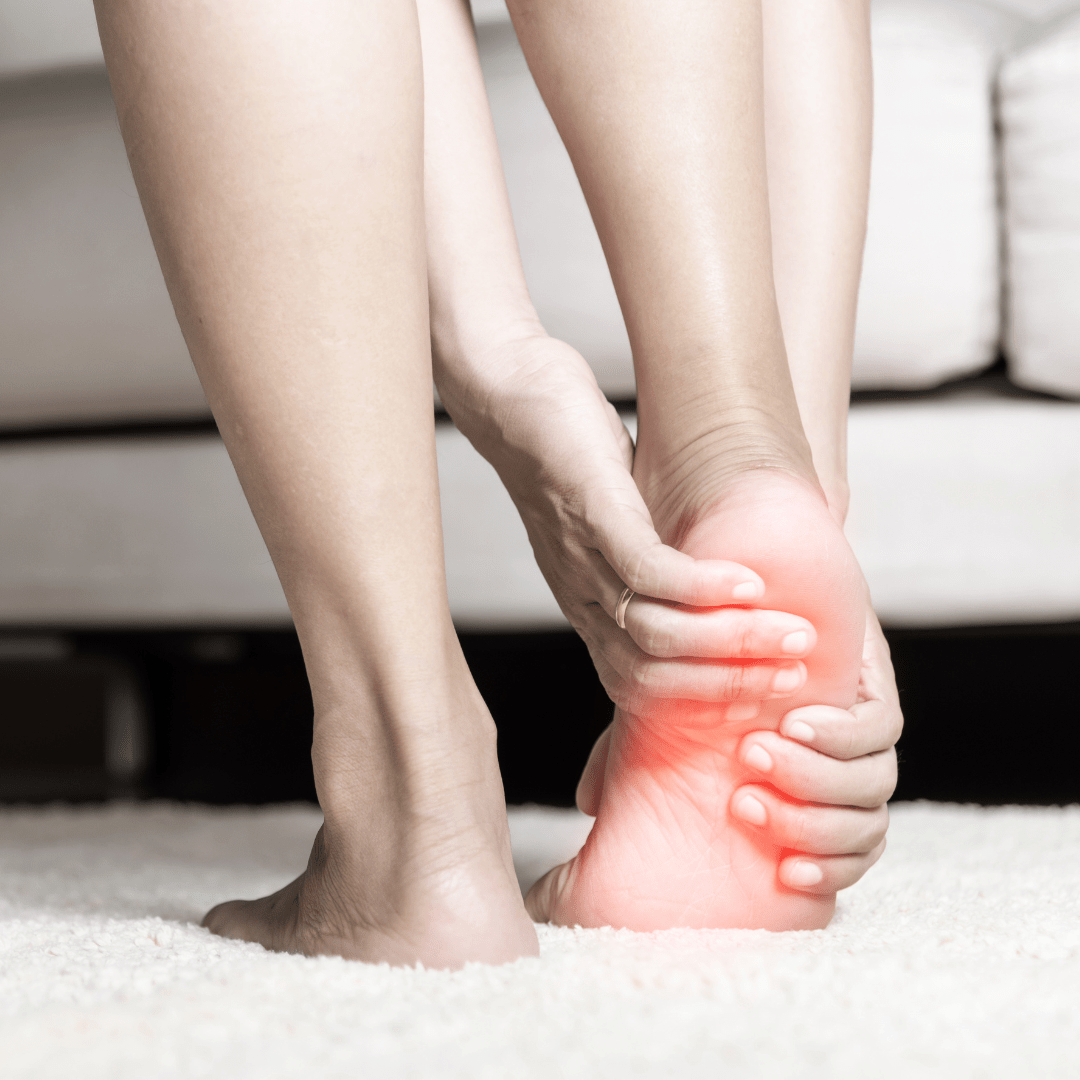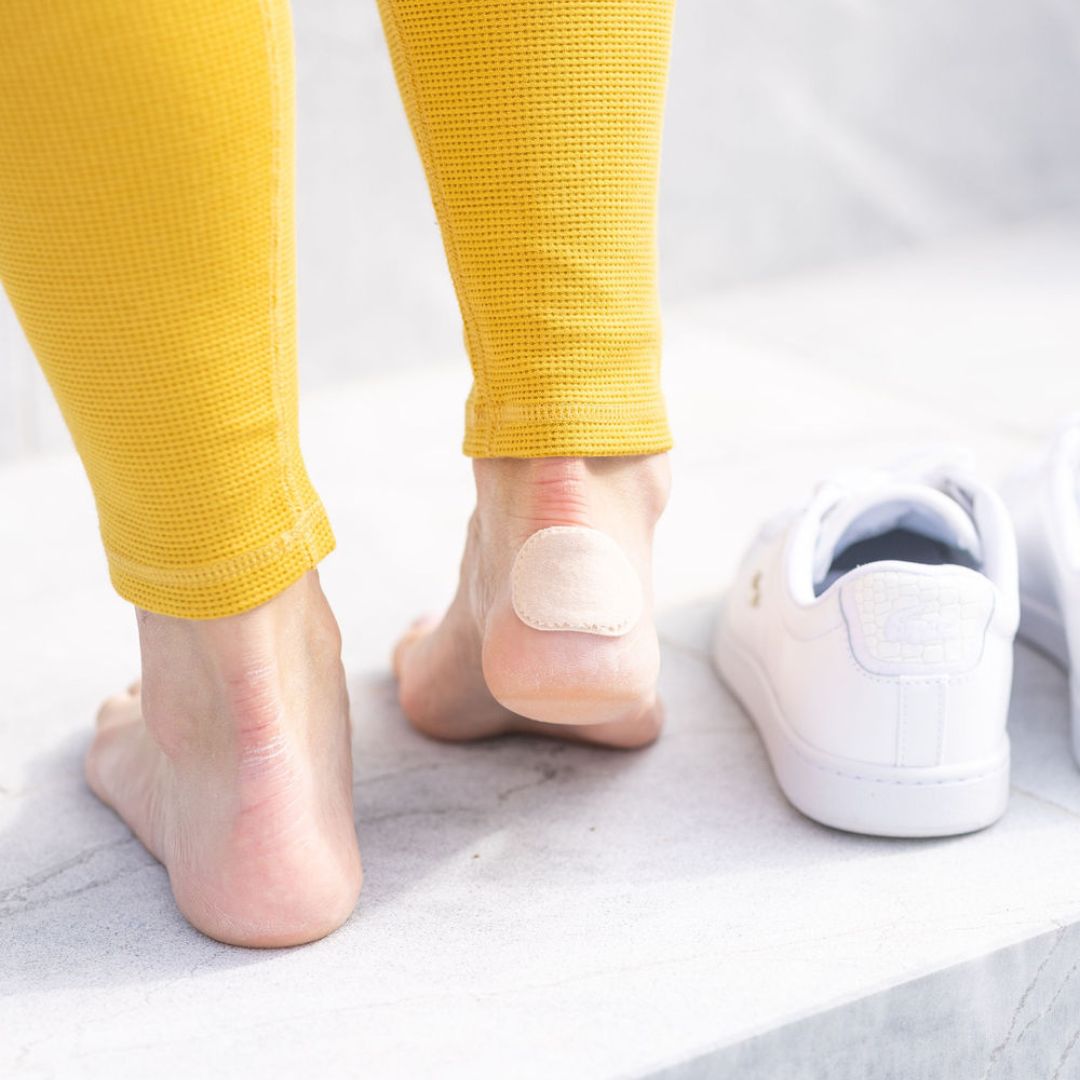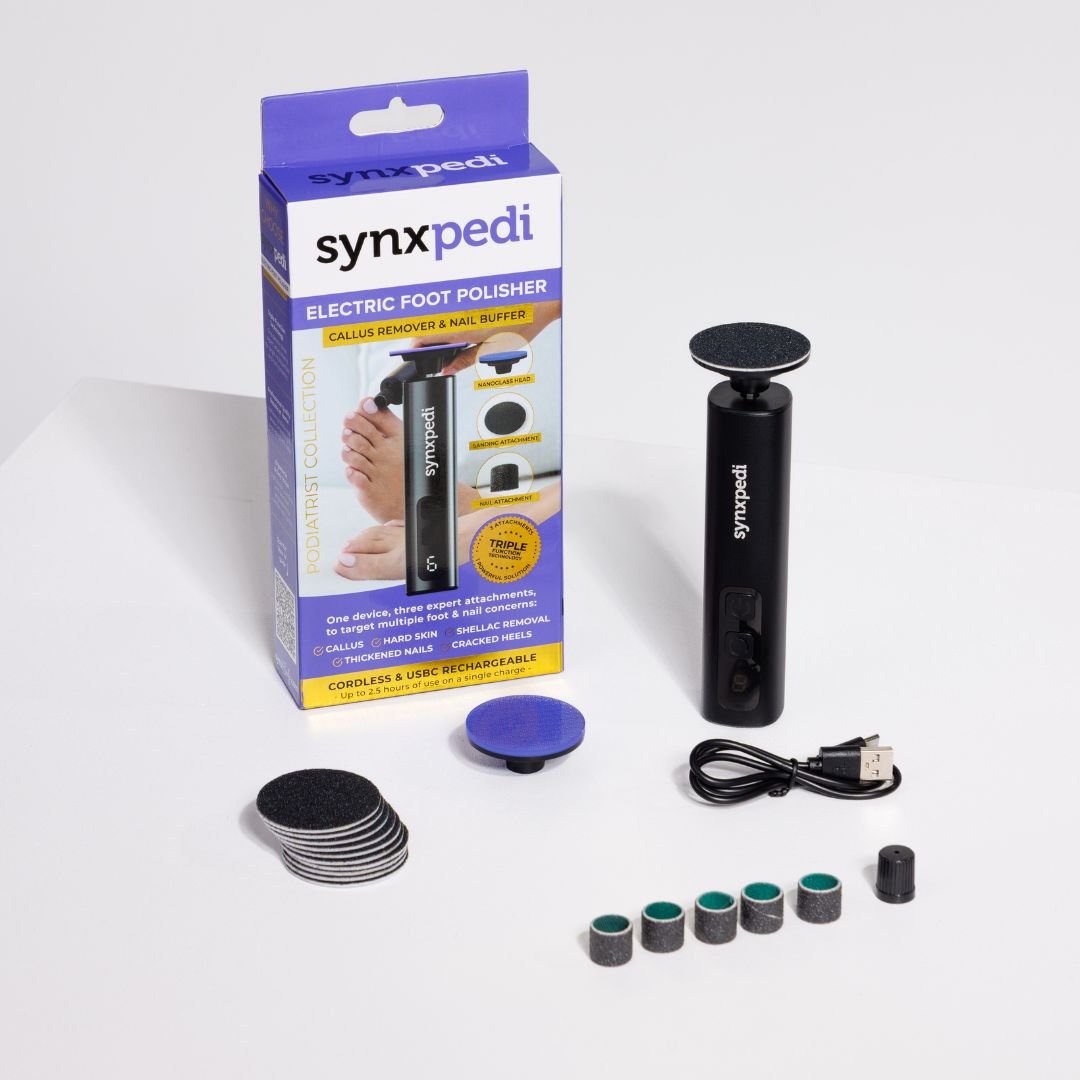Corns and calluses can be unsightly and super uncomfortable too. They are thick, hardened layers of skin that develop when the skin tries to protect itself against pressure or friction. They often form on feet and toes, or even hands and fingers.
What are corns and callus?
Corns are smaller and deeper than calluses and have a focused core or centre. Soft corns most commonly occur between the toes whilst hard corns tend to form on the outer toes or under the surface of the foot and heels.
Calluses are often bigger than corns and tend to form on pressured areas such as the ball of the foot and heels.
They are caused by the skin’s response to friction and pressure, and can appear as below:
- Rough, hard, yellowing patch of lumpy or bumpy skin
- Skin that’s sensitive to touch
- Discomfort and pain when wearing shoes
Corns and callus can be treated safely, and can also be prevented with the right care and products.
Where do corns commonly develop on the foot?

Corns may form in a variety of places on your feet (and even hands), such as:
- Below the toenail bed
- Between the toes
- On the sides of the feet
- On the bottoms of the feet
How to treat corns and callus?
If you have a corn or callus on your foot, we suggest first seeing a podiatrist to have it debrided or shaved painlessly and safely. This helps to reduce the pressure on your joints whilst also reducing pain and improving the way you walk. It is also important for you podiatrist to review the way you walk and see if they can improve your gait and reduce the corns or callus from returning.
- It’s possible a corn can be reduced by using a foot file. But first you need to soak your feet in a warm bath with Epsom salts. After the soak, pat your feet dry with a clean towel and moisturise with a hydrating lotion like our Synxeaze heel balm. Continue this process daily until the corn has become soft. Then once it is soft, and providing not painful, try gently rubbing it with a pumice stone or foot file.
- Another option is to apply a non-medicated corn or callus pad, such as our Synxgeli Corn and Callus Foam Cushions. After your feet are dry, place the non-medicated corn or callus pads to relieve the pressure from the area.
- Over the counter options are also available such as salicylic acid and other topical corn removers. We recommend following the manufacturer's instructions for these products and we also recommend using our Corn and Callus Foam Cushions to protect the surrounding skin from damage.
When to visit the doctor
We recommend visiting your podiatrist regularly to treat your corns or calluses and identify any potential causes that could be aggravating or causing them. Depending on the size of the corn, it may take a few visits before it’s completely gone.
How to prevent corns
We’ve found the best way to prevent corns from forming and coming back is to ensure you wear comfortable shoes, that fit your feet properly… not tight shoes, where your toes and feet can be all crammed in. Your toes need to be able to move easily in the shoes.
Another option is to cover the areas prone to corns (top of your toes and sides of feet), with products such as our Synxgeli Toe Sleeves.
Keeping toenails trimmed is another great way to prevent corns, as long toenails can cause toes to be in an abnormal position.
With an array of treatment options available there’s no need to suffer the discomfort of corns any longer. To find out more about some of the products listed above and how you can relieve corn symptoms, visit http://www.synxbody.com






